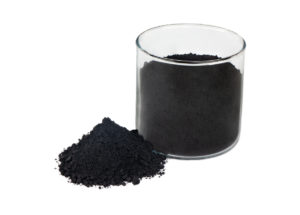Energy production requires complex systems with many components that work together. As the largest electricity supplier in Switzerland, Axpo plays a major role in this process. The following list highlights Axpo’s 10 most important contributions to energy security.
1. Axpo is the largest electricity supplier in Switzerland
Axpo has over 100 plants that produce 20 terawatt hours (TWh) per year. Their output represents around 30 percent of Switzerland’s total production. Energy sources for this electricity include water, wind, solar, nuclear, and biomass, which are largely climate-friendly and renewable. Axpo’s energy network spans about 2,200 kilometers and employs around 6,000 people. Its infrastructure has continually generated electricity for over a century.
2. Axpo invests in a secure power supply
Each year, Axpo spends hundreds of millions of francs on the construction, maintenance, and operation of power plants and networks. Recent investments include the construction of the Linth-Limmern pumped storage power plant, the voltage increase of Axpo’s grid, solar systems in the Alps and lowlands, and the inspection of nuclear power plants. Seventy percent of the last decade’s investments have been made in Switzerland.
3. Axpo combines the strengths of production and trade
Electricity suppliers must continually attract and retain buyers because excess electricity can’t be stored in sufficient quantities. The combination of production and trading thus requires power purchase agreements, especially when using renewable energy sources. As a result, an integrated business model adds value and security to energy markets.
4. Axpo drives digitization
The expansion of renewable energy systems that depend on favorable weather is making it increasingly difficult to balance energy production with demand. The digitization of core processes for the production, transmission, trade, and distribution of electricity is therefore becoming more crucial to this market. Axpo is increasing its use of robotics, including drones and smart meters.
5. Axpo is preparing its grids for future needs
Axpo is increasing the voltage of its national grid from 50 to 110 volts, which will cost billions over generations. This upgrade will double the grid’s transmission capacity and reduce losses by 75 percent.
6. Axpo is expanding solar power in Switzerland
Switzerland needs a rapid expansion of solar power if its transition to renewable energy is to succeed. Solar systems are particularly efficient in cold weather when electricity is needed most. Axpo plans to build about 4,200 of these systems in the Alps and Central Plateau. They will generate over 1.2 gigawatts of electrical power.
7. Axpo is investing in the long-term operation of nuclear power plants
Nuclear energy is a bridge technology that provides time to implement renewable energy sources. Axpo is making long-term investments in Switzerland’s nuclear power plants, such as increasing the Leibstadt plant’s output to 150 gigawatt-hours (GWh) per year.
8. Axpo is investing in future technologies
Batteries and hydrogen (H₂) are playing increasingly important roles in the transition to CO2-free energy production. Axpo is investing in both of these technologies, including H₂ systems and Power-to-X projects.
9. Axpo is a leader in long-term power purchase agreements (PPAs)
PPAs are a growing trend in the energy sector because they create predictable, secure energy supplies by enabling production without the need for subsidiaries. Axpo ranks among the top European electricity suppliers in this field. Its agreements include Denner’s PPA with the AlpinSolar solar power plant and Nestlé’s PPA with the Mauvoisin water power plant.
10. Axpo is improving supply security with immediate measures
Axpo is holding more water in its reservoirs during the summer, allowing it to shift about 1 TWh of electricity to winter production. It has also postponed its renovation of the Gigerwald dam, making another 160 GWh of power available during the winter.




